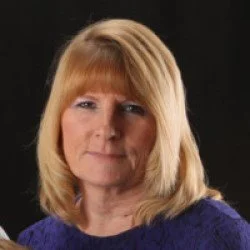Small Homes and Manufactured Housing Proposed as Solution to Current Housing Shortage
Written By: Joel Palmer, Op-Ed Writer
One way to address the lack of housing inventory while also making home buying more affordable for certain populations is to build and finance nontraditional housing such as manufactured homes and so-called “tiny” homes.
But making this happen will likely require mortgage lenders willing and able to finance these properties.
The lack of existing homes being put up for sale has greatly increased home prices. Builders are trying to keep up with demand, but several obstacles, including rising material prices, have hindered that effort.
A recent opinion piece for the Urban Institute suggested that building smaller homes could ease the housing shortage.
New construction has prioritized small homes in recent years. Between 1999 and 2015, the average size of a new home expanded from 2,221 square feet to more than 2,700 square feet. But in recent years, the average size of a new home has decreased. Some are calling for incentives and policies that allow even smaller houses for people to buy.
“For the housing market to ensure ample affordable housing options remain available, policymakers can seek to reduce production costs by promoting alternative building methods, such as modular or panelized housing,” wrote Michael Neal of the Urban Institute.
There is also the issue of financing. Tiny homes, which have become a trend in housing as people opt for a more minimalist lifestyle, are difficult to finance. Traditional mortgage loans are not compatible with tiny house financing, which can cost between $8,000 to $150,000. This forces buyers of these nontraditional homes to finance through personal loans, home equity loans on their existing properties, or financing from home builders.
Manufactured housing is also a potential solution to the current housing shortage and the problem of affordable housing.
However, the Consumer Finance Protection Bureau recently released a report showing the difficulty in securing financing for these types of properties.
The report reinforced many of the issues that hinder this market, such as the need for lenders to charge higher interest rates. In addition, many of these properties depreciate in value because homeowners don’t own the land the property rests on.
“Much more work needs to be done to understand the options available to these families and how best to help ensure that manufactured housing homeownership can be a path to financial stability for the rural and lower-income families who depend on it,” said Acting CFPB Director Dave Uejio.
The report showed around 42 percent of manufactured home purchase loans are “chattel” loans, which are secured by the home but not the land. These properties have higher interest rates and fewer consumer protections than mortgages.
In addition, only 30 percent of manufactured home loan applications are approved. Plus, less than 4 percent of chattel originations were for refinances.
The Biden administration included several affordable housing initiatives in its recent budget proposal. One proposal is a Home Equity Accelerator Loan (HEAL) Pilot that would test new loan products designed to lower barriers to homeownership for first-time, first-generation homebuyers.
About the Author
As an NAMU® Opinion Editorial Contributor, Joel Palmer is a freelance writer who spent 10 years as a business and financial reporter and another 10 years in marketing for the insurance and financial services industries. He regularly writes about the mortgage industry, as well as residential and commercial real estate, investments, and retirement income planning. He has also ghostwritten books on starting a business, marketing, and retirement income planning.













































